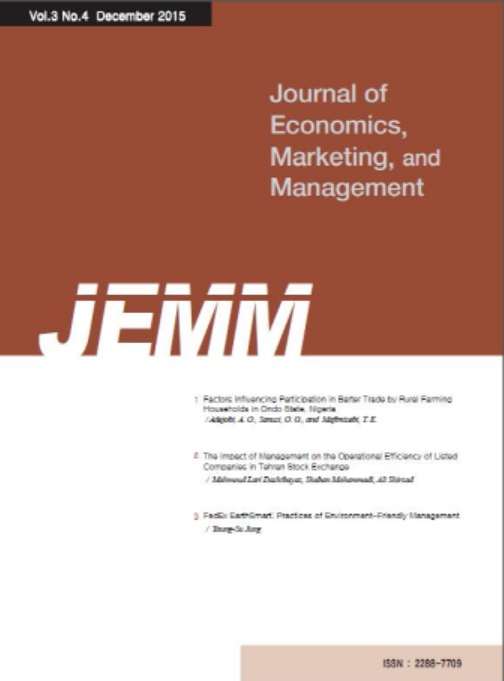3권 1호
초록
Abstract
High growth and increasing traffic and transport finished vehicles, a significant impact on how organize the flow of parts to auto makers an dagencies have As a result, the automakers to improve its position as a highly responsive, with minimal costs, the out sourcing of their logistics processes. This paperis the result of field research to determine the effectiveness of the logistics industry in Iran and focuses on information technology deals the transport vehicle and parts sales deals, indicators used in the model include: IT focuses, IT Valence, IT Competency, IT Managerial Commitment, IT Resource Commitment and competitive advantage identified. Data collected by questionnaires from managers and experts have been towing companies ISACO and SAIPA trailer hypotheses using structural equation methods and software has been analyzed Amos, Results show, focusing on information technology now has significant impacts on logistics and transport. As a result the impact of, IT valence, IT competency and IT Managerial Commitment analytics to gain competitive advantage was not approved, but the rest of the factors were confirmed.
초록
Abstract
Present monetary system is based on fallacies. The purpose of this article is to highlight the pitfalls in economic thinking. The article shows that this way of thinking leads to the creation of inflation which is the root of all evil. The analysis proceeds in different approach to the contemporary theory of money. An inflation- free monetary system is introduced. Monetary system is the set of mechanisms that controls money. In this broad sense, monetary system can be divided into three different systems. Each of them has different goal; National monetary system which aims to raise sufficient funds in order to reach an optimal level of output growth that maintains full employment and satisfies the economic requirements of the community. National redistribution system which aims to redistribute funds in order to sustain individuals at or above a specified material standard of living, and enable government to provide public services. International monetary system which aims to preserve rights of parties in foreign exchange transactions.
초록
Abstract
Managers are always trying to be the best internal controls in their organizations copper approximate because they know that be effective internal control over previous systems, to fulfill the mission of the organization and minimize unexpected events will be extremely difficult. On the other hand, the existence of internal controls to increase efficiency, reduce head loss, assets and achieving a reasonable assurance of the reliability of financial statements and compliance with laws and regulations will be. Internal control, not an event, but a series of operations and activities on the basis of output. Internal controls help to achieve the goal of minimizing the problems of implementing appropriate internal controls. Internal control is an integral component of corporate governance that will provide reasonable assurance of achieving the organization's objectives. preventing, detecting errors and fraud goes to work. Responsibility for the prevention and detection of fraud and error in the public sector is the responsibility of managers. Managers of internal control and consistently applying appropriate accounting systems, this responsibility will play (Lin et al., 2011). Since the public sector organizations differ from each other, thus establishing internal controls cant be the same for all organizations and agencies of the public sector. Establish specific controls on each system to factors such as size, type of operation and organizational goals that the system is designed, it depends. On the other hand, rapid advances in information technology, the need to update internal control guidelines in relation to Create a new computer system so as to ensure that the activities of managers and effective control Should be updated if necessary.














